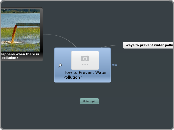Counter Counter Argument
Eating foods high in protein and eating lots of fruits and vegetables would be able to counteract side effects. Drinking plenty to water and including a salty snack in the meal can allow people who exercise to feel well when exercising.
OMAD
Counter Argument
Fasting can benefit some people, however, there are many reasons why people should not fast. Doctors say that individuals who are pregnant, adolescent, have a history of eating disorders or women who are breastfeeding should not be fasting. During fasts, many forget or lose the sense needed to know when to drink. As the body is mainly made up of water, drinking during fasting is extremely important. Drinking water is encouraged, although some say that having something flavoured such as coffee or tea with no sugar is a more attainable goal. With every diet, it is important to exercise. This is not dangerous to do so, however, when sweating, the body releases plenty of water and sodium. This can cause fatigue, headaches, or even fainting.
Argument
The One Meal A Day Diet (OMAD) can be a healthy lifestyle for the majority of Canada’s adult population.
Cellular Impact
Gluconeogenesis is thought of the opposite of glycolysis. The end of glycolysis is pyruvate and if created in gluconeogenesis, can be converted into OAA. This can be turned back into phosphoenolpyruvate (PEP), which is also found in glycolysis, and glycolysis can be run backward with the substitution of a few enzymes. The final product is back to glucose. Since fatty acids cannot be used, amino acids are used. This means that during OMAD, protein must be a great portion of the meal to allow for cellular respiration (Rana, 2014).
During cellular respiration on OMAD, the cells go through gluconeogenesis. This is the pathway in which new glucose is formed through non-carbohydrate precursor molecules. Fatty acids are not able to fuel gluconeogenesis because the oxidation of fatty acids is acetyl-CoA, which is the entry point into the Krebs cycle. Combining acetyl-CoA with oxaloacetate (OAA) creates a molecule called citrate. The Krebs cycle contributes to many other molecules such as NADH and FADH2 to make ATP in the electron transport chain and eventually it all cycles back to OAA. This means that the two carbons used to create acetyl-CoA are converted into carbon dioxide.
Energy Impact
In long term fasting, a protein in the brain called BDNF is increased, which in effect causes mental clarity. Long term fasting is also proven to reduce pain and inflammation, as well as repair cells and regenerate stem cells, reducing the risk of cancers or any chronic related diseases.
In 2018 the U.S. Centers for Disease Control and Prevention posted that 1 in 7 Americans has diabetes and 95% being a result of poor diet. While most diets are used to lose weight, OMAD proved to help prevent diabetes in a study done on pre-diabetics. One group was told to eat between 7 a.m. and 7 p.m. whilst the other group was told to eat from 7 a.m. to 3 p.m. While both groups did not gain nor lose weight, the group with the smaller eating time regimen showed a decrease in insulin levels, blood pressure, and most surprisingly, a decrease in appetite.
Initially, when starting a fast, the cell’s mitochondria will slow down the production of ATP. When AMPK realizes there has been a drop in ATP, the cell will reduce the amount of energy used to create ATP and in the process, adjusts the amount of energy needed for making ATP in the future as well. This decreases the damage/dysfunction of the mitochondria (mitophagy) and the ability to create more mitochondria (mitochondrial biogenesis). “Calorie restriction supports both of these processes, resulting in a higher quality mitochondrial network,” (Denton, 2019).
Supporting Studies
“Bodybuilders don’t just want to build muscles, but they want them to show. You need two things for that – big muscles and not much fat,” Dr. Mark Mattson said. “It turns out that a lot of bodybuilders, perhaps by trial and error, have found that if they don’t eat breakfast, work out midday or around 16 hours fasted, and then eat in the ensuing time, they are able to maintain and build muscle while losing more fat. There have actually been some studies showing this – you can maintain and build muscle while on an intermittent fasting regimen,” (Mattson, 2019).
The National Institutes of Aging concluded, “Emerging evidence suggests that intermitted dietary energy restriction might improve overall health and reduce risk factors for diabetes and cardiovascular disease in humans. Our new findings in laboratory animals provide evidence that similar intermittent eating patterns can enhance the beneficial effects of aerobic exercise on endurance performance.”
David Sinclair, a scientist at Harvard, performed many experiments on rats to examine what makes them healthier or unhealthier. When the rats were fasting, it lost weight; its blood pressure, cholesterol, and blood sugars all improved immensely. The U.S. National Institutes of Health agreed that fasting had great benefits for the rats in Sinclair’s experiments. The fasting also improved the metabolism of the rats, making it more energy efficient. When fasting in humans, the storage of glycogen in the liver is depleted and the body starts using fats as fuel for the body. This is a metabolic state called ketosis (The Infographics Show, 2019).









